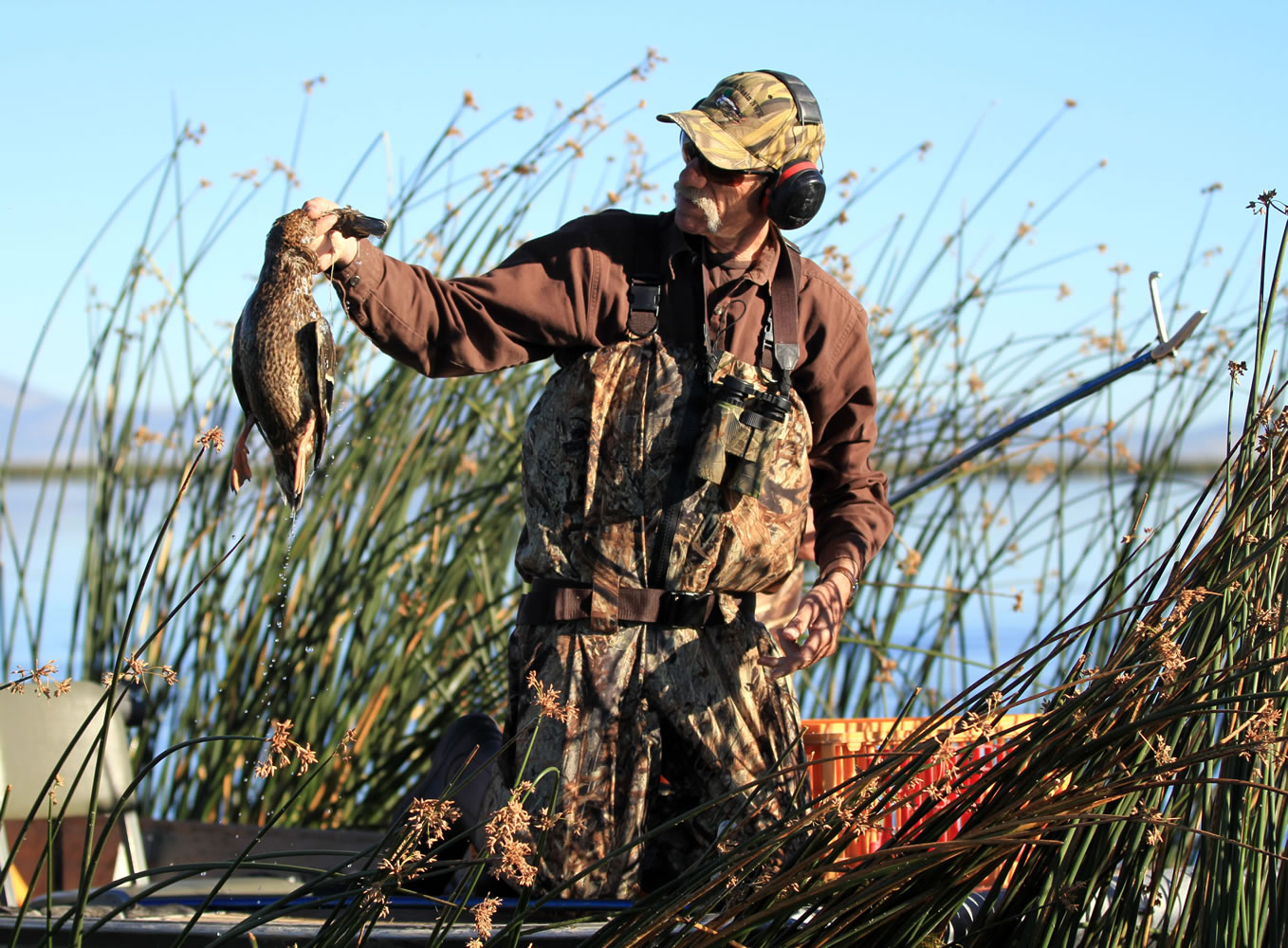GRANTS PASS, Ore. — The drought that has forced irrigation shutoffs at cattle ranches in the upper Klamath Basin is also causing hardship for waterfowl on national wildlife refuges in the region.
Thousands of ducks are dying from a disease called avian botulism on the Tule Lake National Wildlife Refuge near Tule Lake, Calif., due to overcrowded marshes.
While the Tule Lake refuge gets water running off a federal irrigation project that’s getting water, current management plans allow none this summer for the Lower Klamath National Wildlife Refuge, which is practically dry.
That leads to overcrowding on the marshes at Tule Lake, which promotes the spread of the disease, said refuges biologist Dave Mauser. The 13,000 acres of marsh is supporting some 150,000 birds. So far volunteers have picked up 4,500 dead birds, most of them mallards and other kinds of ducks, in an effort to stop the spread of the disease. Mauser estimates the disease has killed about 9,000, putting this year on track to be one of the worst this decade.
The ducks can’t fly somewhere else, because they are molting and have lost their flight feathers, leaving them stranded for a month, he added.
The refuges are a key stop on the Pacific Flyway, and the outlook for this fall is not good, Mauser said. Normally, Lower Klamath would have 20,000 acres flooded now, with water to flood several thousand acres more this fall, after irrigation season is done. But overall the marsh will be about half of normal, and drought is drying up marshes up and down the West Coast, Mauser said. Birds that survive the outbreak may well spread it to other marshes once they embark on their fall migration.
“It’s frustrating,” Mauser said. “The way water policies are, we’re last in line for water.”
Drought this year has reverberated through the basin. The Klamath Tribes are exercising newly recognized senior water rights to protect fish on rivers on former reservation lands in the upper basin. That has forced irrigation shutoffs to ranches drawing water for cattle pasture. Meanwhile, a federal irrigation project is getting most of the water it needs for farms. But that has left none for Lower Klamath refuge, which is at the end of the line. Meanwhile, water that would normally go to farms in central California is being released to keep Klamath River salmon from dying.
Botulism is a toxic bacterium that grows in low oxygen conditions on protein, such as dead fish or birds. Maggots feeding on the rotting flesh take in the toxin, and ducks eating the maggots get sick and die. This strain of botulism does not affect humans, Mauser said.
The botulism outbreak comes on the heels of an avian cholera outbreak in spring 2012 that killed thousands of birds on the Lower Klamath refuge. The severity of that outbreak was also blamed on the lack of water for marshes.
‘Faith-based approach’
U.S. Fish and Wildlife spokesman Matt Baun said there would be water for Lower Klamath refuge this summer if the Klamath Basin Restoration Agreement were in force. The negotiated water-sharing agreement provides 51,000 acre feet of water for the refuges in times of drought.
The agreement is part of a deal to remove four dams on the Klamath River to improve passage for struggling salmon runs, but has run into a roadblock in the Republican-dominated U.S. House of Representatives, where the idea of dam removal is not popular. The newly elected Klamath County Board of Commissioners also opposes it.
The conservation group Oregon Wild opposes the agreement because it doesn’t go far enough in guaranteeing water for the refuges. Conservation director Steve Pedery said the promise of water is an empty one, because there is no place to get it, due to the demands elsewhere in the system. He suggests removing commercial farming from Tule Lake refuge, which would free up plenty of water to flood marshes.
“The Obama administration is continuing the Bush administration’s faith-based approach to water management in the Klamath Basin. Pray for rain, while pretending the problem isn’t as bad as it looks,” Pedery said in an email.
Pedery added that their efforts to get consideration for water for the refuges in a task force working on legislative that would take the place of the restoration agreement have been rebuffed.



